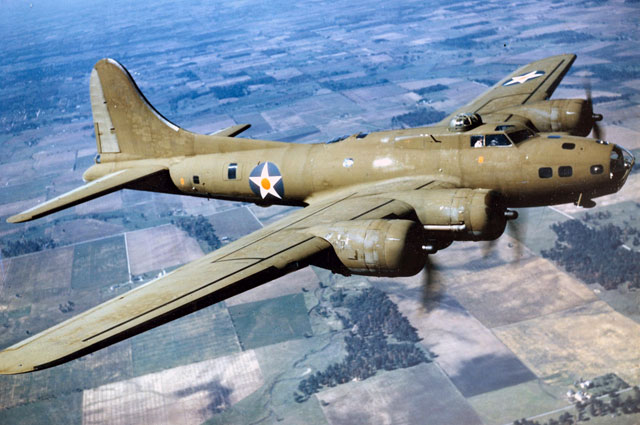
Boeing B-17E Flying Fortress (Multiengine Bomber)
Snapshot
- Nickname:
- Flying Fortress
- Number Built:
- 512
- Make:
- Boeing
- Mission:
- Multiengine Bomber
- Location:
- ハンガー79
Background
In 1935, the Boeing Airplane Company created a long-range bomber that became an icon of strategic air power. The rugged dependability of the B-17 allowed its crew to take the fight deep into enemy territory. Although best known for leading the war against Germany, Boeing’s “Flying Fortress” was the primary bomber during the opening moves of the Pacific War. Japanese fighter pilots were amazed at how much damage the B-17 could endure and keep on flying. Operating out of primitive jungle airstrips , the B-17’s crews were on their own, receiving no supplies, parts, or money from the United States. They fought valiantly for months, piecing together airframes from wreckage and scrounging bullets, bombs, and fuel while battling fatigue, illness, and malnutrition.
Our B-17E, serial #41-2446, arrived in Honolulu 10 days after the Pearl Harbor attack. The following February, it was assigned to the 22nd Bomb Squadron of the 7th Bombardment Group in northern Australia. The Imperial Japanese Navy had seized the Australian base at Rabaul, in New Britain. Army bombers were put under the command of the U.S. Navy, and a mission was hastily planned to strike at the invasion fleet. Six B-17Es took off at midnight on Feb. 22, 1942. They were separated by storms en route, and B-17E #41-2446, piloted by Fred Eaton, eventually arrived over the target — Japanese ships in the harbor at Rabaul.
The bomb bay doors stuck on Eaton’s first run, so he came around again. Anti-aircraft fire punctured the wing fuel tank. A6M “Zero” and A5M “Claude” fighters swarmed the bomber; after a half-hour running battle, the frustrated fighters gave up. Eaton was running for Port Moresby, on the other side of New Guinea. But with mountains ahead and the B-17’s fuel tanks nearly empty, he knew he’d have to put the crippled bomber down. He brought the B-17 down on what he mistakenly thought was a flat, green field in the jungle. The Flying Fortress splashed into Agaiambo Swamp, settling into five feet of water and thick grass, and there it lay for more than a half-century. Australian Army pilots who glimpsed it from overhead dubbed it the “Swamp Ghost.”
Aviation enthusiast Alfred Hagen supervised the recovery of the Swamp Ghost in 2006. The arduous process required the bomber to be disassembled in the swamp and the pieces flown out by helicopter. The wreckage spent four years on the docks in Lae pending the New Guinea government’s approval to export it. Stored for a time in California, the B-17E “Swamp Ghost” returned to Hawaii in 2014.

Please visit “Boeing B-17E Flying Fortress Swamp Ghost” blog post for more information on this aircraft. Watch our “Inside “Swamp Ghost” at Pearl Harbor” video here.
Specs
- Contractor
- Boeing
- Deployment Date
- 1941 with the British Air Force
- Span
- 103 feet, 9 inches
- Length
- 73 feet, 10 inches
- Height
- 19 feet, 2 inches
- Weight
- 51,000 lbs
- Max. Speed
- 317 MPH
- Service Ceiling
- 36,000 feet
- Range
- 3,200 miles
- Crew
- 10 (Pilot, co-pilot, navigator, bombardier/nose gunner, flight engineer)










